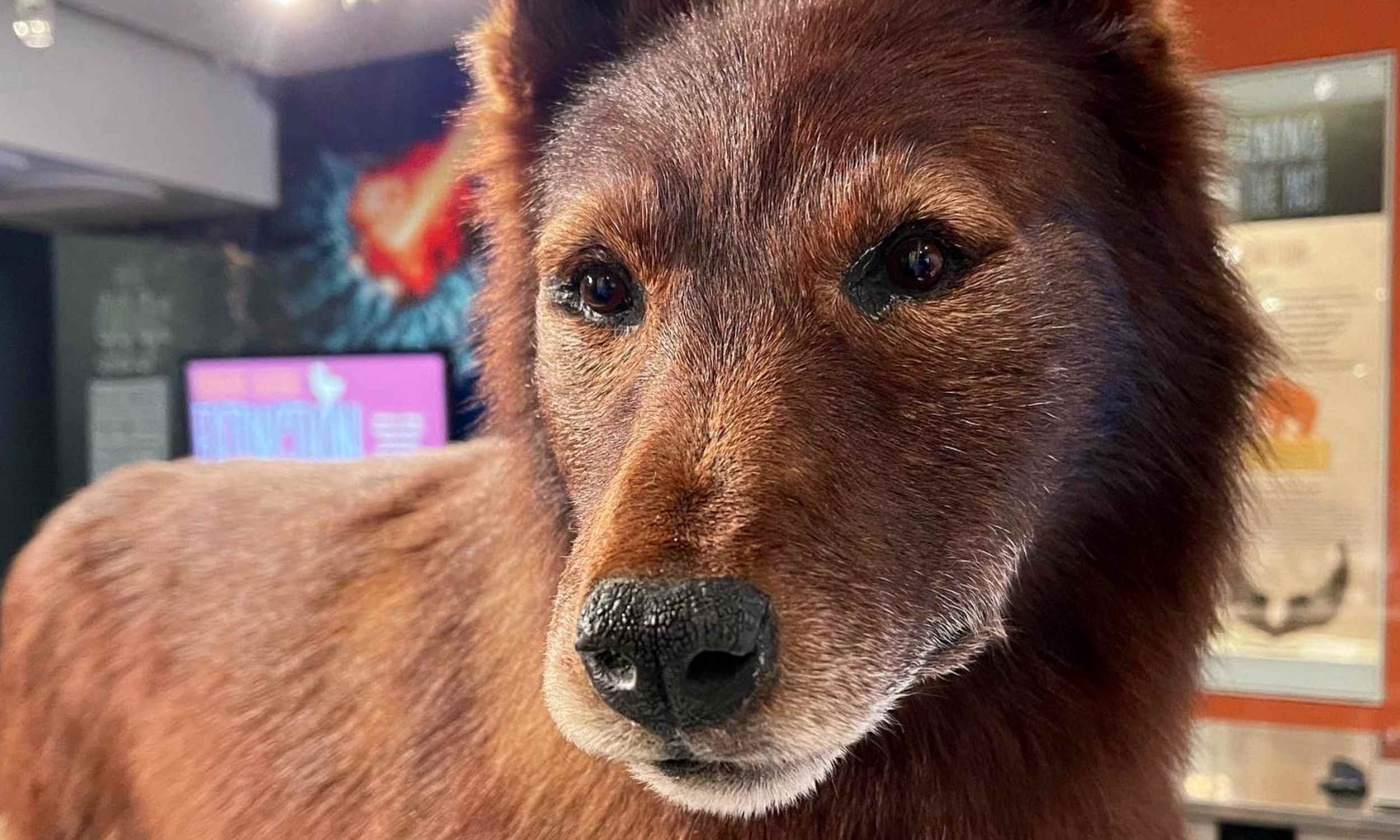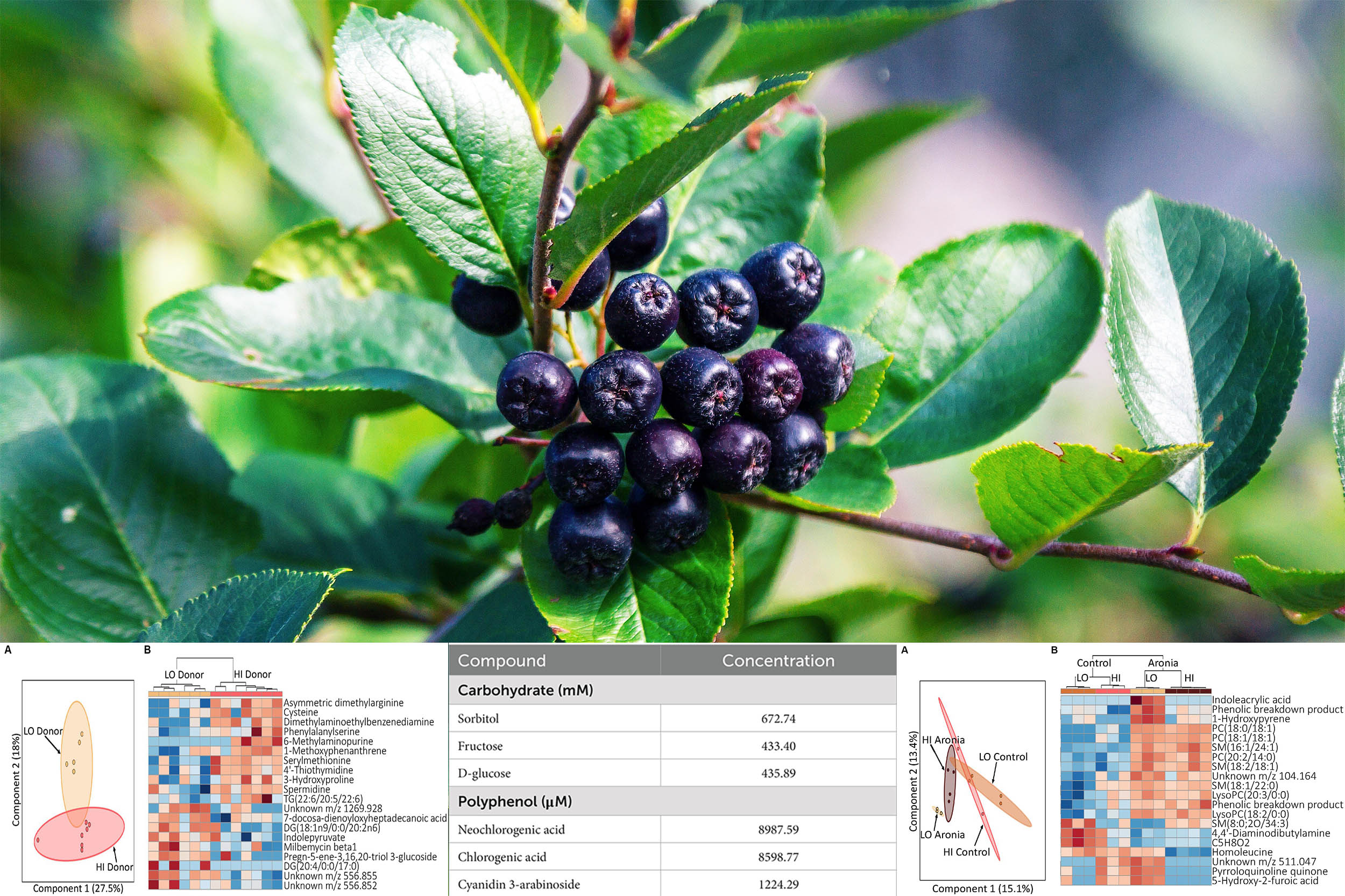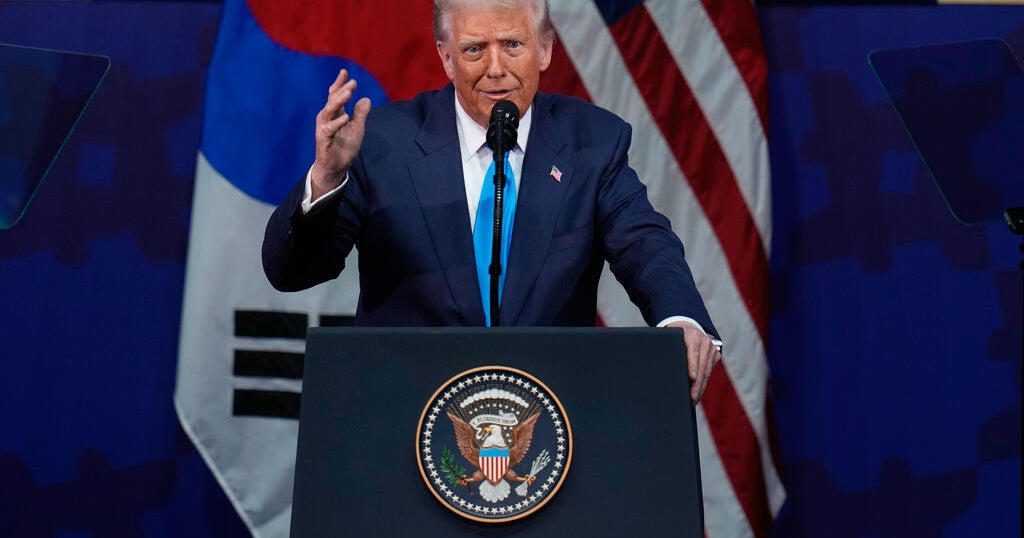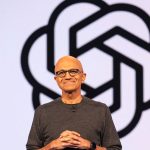Washington — President Trump said in South Korea Wednesday that he hopes to emerge from a meeting with Chinese President Xi Jinping with a U.S.-China trade deal in hand.
“We’re going to be, I hope, making a deal. I think we’re going to have a deal. I think it will be a good deal for both,” the president said. “The world is watching, and I think we’ll have something that’s very exciting for everybody.”
Mr. Trump made the remarks during a speech to the Asia Pacific Economic Cooperation summit in Gyeongju, South Korea, part of a nearly weeklong swing through Asia. Much of his trip has focused on cementing trade agreements and boosting economic ties with U.S. partners in the region — the president has signed trade and tariff deals with Japan, Malaysia and several other countries, and he’s holding talks with South Korean officials later in the day.
But the meeting with Xi in South Korea on Thursday is one the most hotly anticipated part of the trip. The session could be tense, as China and the U.S. have clashed on trade for months.
The U.S. president is pressing Xi to loosen a set of tough export restrictions on rare earth elements, which are essential for everything from computer chips to aerospace, threatening 100% tariffs on Chinese goods starting Saturday unless Beijing backs off. Treasury Secretary Scott Bessent said Sunday the additional 100% tariffs — which would boost the total U.S. rate to 140% — were “effectively off the table” after a two-day meeting with a Chinese negotiator.
The trade war has also led China to cut off purchases of U.S. soybeans, causing pain for American farmers, though Bessent said Sunday he expects the soybean boycott to end. And Mr. Trump needs Chinese approval for a deal to transfer TikTok’s U.S. operations from Beijing-based parent company ByteDance.
Mr. Trump predicted earlier this week that the two leaders will reach an agreement by the end of his trip, saying he has “a lot of respect for President Xi” and “I think we’re going to come away with a deal.”
Nicholas Burns, a Biden-era U.S. ambassador to China, told CBS News chief White House correspondent Nancy Cordes that Wednesday’s meeting is “very important,” calling the trade war a “test of wills” between the world’s two biggest economies.
“China is the most important competitor, adversary of the United States worldwide now. It will be in the future,” Burns said. “So the stakes are high, because we have lots of issues where we are competing with China.”
Ng Han Guan / AP
Trump addresses U.S. partners in Asia
The president also used his speech at the APEC event to tout the other trade deals he’s inked in Asia. Mr. Trump highlighted his plans to partner with other countries on key industries like shipbuilding, semiconductors and critical minerals, and framed the trade negotiations as an extension of the U.S.’s defense alliances in the region, telling audience members that “economic security is national security.”
APEC is a regional economic group with 21 member countries around the Pacific Rim, including China, Mexico, Russia, Singapore, South Korea and Vietnam. Promoting free trade is a major component of the forum, despite Mr. Trump’s push for higher tariffs on many member countries, a strategy that the president argues is necessary to rebalance trade, but critics warn could lead to higher inflation and more sluggish economic growth.
The president is looking to cinch a trade agreement with South Korea, the United States’ sixth-largest trading partner. Over the summer, Mr. Trump announced a framework deal that involves the U.S. charging 15% tariffs on South Korean goods, while South Korea invests billions in U.S. industry and opens its market to American cars. Bessent told reporters the South Korea deal is unlikely to be resolved this week, but it’s close.
During the APAC speech, Mr. Trump called South Korea “a cherished American friend and a close ally.” He said he’s looking to work with the country on investments in U.S. shipbuilding.
Before leaving Tokyo, Mr. Trump also signed a trade deal with new Japanese Prime Minister Sanae Takaichi on Tuesday, cementing 15% tariffs on imported Japanese goods, lower than the 25% initially threatened by the president. Japan also pledged $550 billion in investments in U.S. industry. And the president announced trade frameworks with Malaysia, Vietnam, Cambodia and Thailand earlier in the trip.
Mark Schiefelbein / AP
He’s also expected to meet at some point with Nvidia CEO Jensen Huang, as the microchip giant partners with the Department of Energy to build an artificial intelligence supercomputer and presses for more access to China’s market.
And Mr. Trump has said he would be open to meeting North Korean leader Kim Jong Un during his trip, though no such meeting has been planned. In Mr. Trump’s first term, he became the first sitting president to visit North Korea, a trip that happened after he put an invitation to Kim on social media. Gyeongju, with a population of about 250,000 in southeastern Korea, sits on the opposite side of the country as Seoul, the nation’s capital, and thus, is farther from neighboring North Korea.
First Appeared on
Source link














